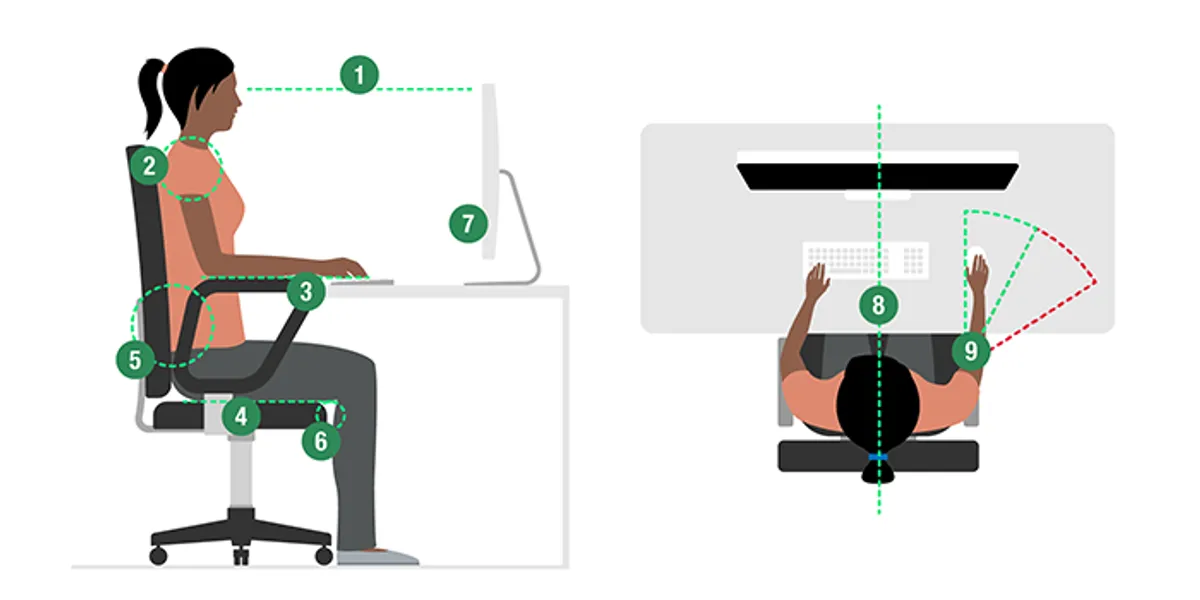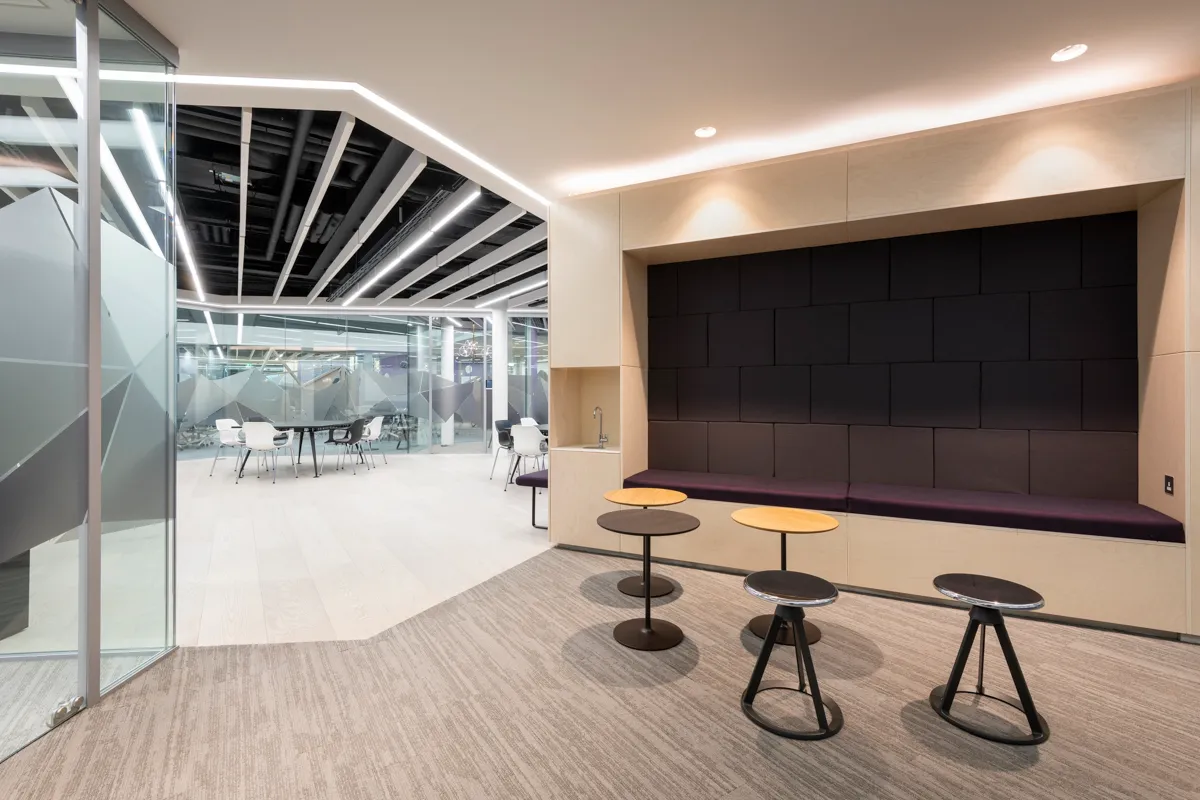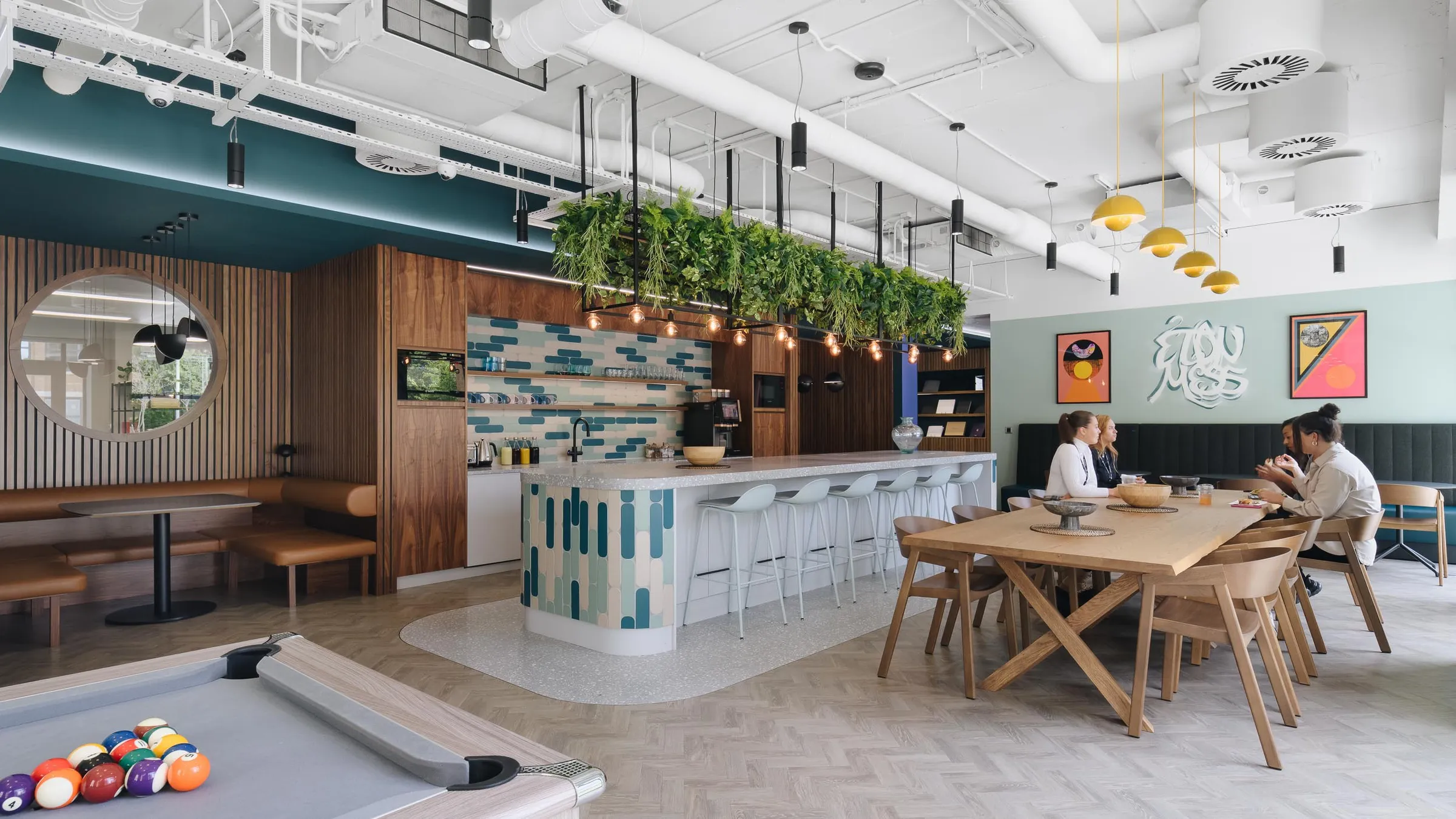Workplace Furniture as Tools for Wellness
How do we surround ourselves with tools for wellness at work? Furniture plays a key role.


Written by
Fritha Selwyn-Jones
Contents
At Sketch Studios, wellness is always at the forefront of our minds when we’re developing a workplace project or engaging in furniture consultancy. Wellness should be a priority in the workplace, not just because it’s our shared responsibility to create a comfortable, welcoming space for all but because it actually benefits business.
But wellness isn’t a tangible thing we can easily quantify. Myriad things impact wellness, and more to the point, wellness is different for everyone. We use workplace design and furnishing to create spaces charged with the potential for wellness. In this article, we’ll take a look at how it’s done.
Ergonomic Excellence in Design
Wellness involves consistently practising health habits that keep your physical and mental health in check. It’s about taking care of your mind, body, and soul. When it comes to ergonomics in wellnes, the ‘body’ part is at the top of the list. Ergonomics is central to capturing wellness with furniture.
What is ergonomics? In the context of design, specifically workplace design, ergonomics means fitting the environment to the worker's needs. When we design with ergonomics in mind, we consider the physical needs of the furniture and space user. Will they be sitting or standing for long periods? Are there accessibility needs for disabled users? What lighting levels are comfortable for focus? All these and more questions need to be considered as we take a holistic look at the environment and individuals who will spend time in it.
Did you know there’s an optimal posture for sitting at work? The Health & Safety Executive recommends the following for good posture at a desk:

Image source: www.hse.gov.uk
Top of screen level with eyes, about an arm's length away
Relax your shoulders - try to position yourself high enough so you don't need to shrug your shoulders
Keyboard just below elbow height
Seat height equally supports front and back of thighs (or use cushion to raise seated position)
Back of the seat provides good lower back support (or use cushion, to provide additional back support)
Gap of 2-3 cm between front of seat bottom and back of knee
Computer and screen directly in front of you on desk or other surface
Screen and keyboard central - don't twist your back
Mouse in line with elbow
The HSE also recommends using a separate keyword when working on a laptop so the laptop can be placed on a stand and elevated to eye level or using a separate display screen that can be placed at the right height.
Correct posture is one of the foundations to workplace wellness because it guards your physical health during the long periods of sitting most workers have to do during the day. Correct posture helps to:
Minimise strain on the spine and lower back
Keep the head aligned, reducing neck tension
Encourage proper blood flow, reducing fatigue
Increase overall comfort, reducing the need for frequent adjustments
Allow for greater focus and efficiency
Decrease the likelihood of repetitive strain injuries
Keep the chest open, facilitating better lung function
Contribute to reduced stress and enhanced mood
Collectively, these benefits mean team members feel happier and healthier at work. Greater energy levels and comfort lead to higher productivity, company loyalty, and creativity.
Correct sitting posture is essential, but you can further optimise physical wellbeing through ergonomics by encouraging more mobility and providing furniture for flexibility in ways of working. We recommend height-adjustable sit-stand desks as a great solution for this. Not only does this allow employees to raise their desks to the ideal height for standing, but it also means desks can be adjusted at a seated level, meaning a better fit for whoever sits, especially in hot-desking offices where multiple people with different heights use desks and builds.
Movement and space use in workplaces are another key factor in wellbeing, and it’s important that the environment can adapt to the diverse and changing needs of those using it.
Promoting Movement and Flexibility
Staying still all day simply isn’t healthy. The NHS warns that being still for too long lowers the body’s metabolism, which can lead to obesity. Sitting still can impact our bodies in all kinds of ways and even cause issues like diabetes and cancer. Considering that we spend about a third of our adult lives at work, it’s imperative that we find ways to combat sedentary work routines and put things in place to encourage movement.
How can furniture help make this possible? Sit-stand desks are a good start, but we can do more to encourage movement. Here are some techniques:
Solution | Why it Works |
Modular furniture | Allows for reconfiguration, promoting frequent movement and collaboration. |
Active sitting chairs | Encourages micro-movements, engaging core muscles and reducing stiffness. |
Treadmill desks | Facilitates walking while working, boosting circulation and energy levels. |
Perching stools | Supports semi-standing postures, encouraging users to shift positions. |
Walking paths for meetings | Encourages physical activity during discussions, breaking up sedentary periods. |
Standing collaboration tables | Promotes standing during meetings, reducing sedentary time and increasing engagement. |
How we arrange furniture in a space is another tool for promoting movement and flexibility. Open-plan offices with breakout spaces provide workers with more options and freedom regarding how and where they wish to work, breaking up the monotony. Modular furniture is excellent for open-plan offices because it gives those using the space the autonomy to create their preferred working environment, even if what they prefer changes throughout the day. Modular furniture is especially useful in smaller workspaces to provide more options in less room. With the combination of modular furniture and open-plan space, teams can adapt to:
Collaboration tasks
Individual, private work time
Meetings
Socialising
Training
Hosting clients

Furniture for Mental Well-being
Comfortable posture and moving around more at work significantly impact physical health. But without caring for mental health, we’re only halfway there to optimising wellbeing. More subtle, indirect, and individual, mental health is more complicated than physical health, which we can analyse and quantify more objectively.
How can we impact mental health with furniture in the workplace? We need to factor in aspects of design and how to play into the overall atmosphere or the environment, making furniture choices that take these into consideration.
Colour
Colour has a profound effect on the mood (more than just aesthetics), and when a room is lined with a certain colour, it’s scientifically proven to change how you feel. Research shows that colour in the workplace can impact mood, emotion, wellbeing (e.g. stress, comfort), and performance (e.g. productivity, performance, creativity). Generally, cool colours like blue elicit calm emotions, whereas hot colours like red stimulate more energy. These differences can be harnessed to create higher and lower energy-intensity spaces depending on what needs to happen there.
Light
Lighting controls our circadian rhythm, the body’s internal clock that regulates sleep-wake cycles, mood, and cognitive function, reducing risks of depression, anxiety, and sleep disorders. Lighting in the workplace can be carefully managed to support the circadian rhythm. Finding ways to increase natural lighting dramatically improves mental health. Where synthetic lighting needs to be used, a few decisions can significantly change the way people feel at work throughout the day.
LED lighting can closely replicate sunlight, which supports wellbeing strategies and enhances employee comfort and sustainability efforts. Research on dynamic LED lighting has found that it increases afternoon alertness in offices.
Layout
Workplace layout impacts mental health, too, although it might not be immediately noticeable. In fact, workplace layout can support reduced stress, increased confidence and productivity, and better socialising at work when you get it right.
We’ve already discussed moving away from traditional offices with open-plan spaces and their benefits to flexible ways of working. Open-plan offices have also been proven to increase collaborative and social approaches to work, where team members feel more ‘together’ and can more easily communicate face to face. But it’s important to ensure workers also have privacy.
Open-plan workplaces are also known to be louder, which can have the opposite effect on mental health. Research on noise and mental health indicates that noise exposure affects mental health by encouraging neuroinflammation and oxidative stress, potentially exacerbating conditions like depression. Aside from this, it just makes it harder to concentrate on work.
Material
We need to think carefully about the materials used in workplace furnishing, as these have an effect on mental health in numerous ways. Natural materials like wood create a calming environment and a ‘warm’ atmosphere. Biophilic elements like living walls and plants dotted around the office bring more nature to the space. The Human Spaces Biophilic Report found that in the US, productivity was impaired by a lack of views of nature, so if views of the outside world are found lacking, increasing nature inside the building could be key.
As previously discussed, workplace acoustics can affect mental health, as spaces that are too loud make it difficult to focus. Choosing the right materials ensures noise is absorbed rather than reflected, keeping sound levels down.
Material choice even impacts air quality, which in turn affects mental and physical health. Low-emission materials contribute to healthier air in the space. Choosing materials that release fewer volatile organic compounds (VOCs), applying non-toxic, water-based paints, varnishes, and finishes, and selecting furniture made with production methods that minimise emissions and reduce environmental impact improve well-being and support the ESG goals of sustainability-driven brands.
And, if your employees work for you because they agree with your sustainability goals, then knowing you make these kinds of conscious choices about furnishings will make them happy, too.
Read our blog for more details about what makes a good workplace tick.
Published on
June 28, 2024
Related Articles










